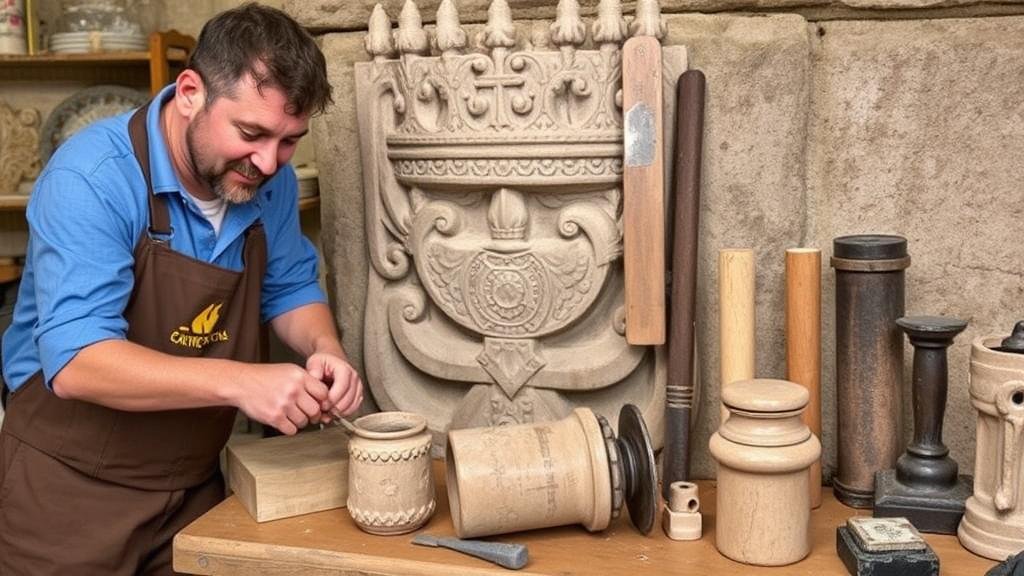Exploring Forgotten Stone Carving Workshops for Masonry Tool Relics
Exploring Forgotten Stone Carving Workshops for Masonry Tool Relics
The art of stone carving has long been an integral part of human civilization, serving as a means for both artistic expression and functional creation. Many workshops dedicated to this craft have faded into obscurity over time, leaving behind a wealth of archaeological and cultural significance in the form of masonry tool relics. This article explores these forgotten stone carving workshops, their historical contexts, and the importance of the associated tool relics in understanding ancient techniques.
Historical Context
Stone carving can be traced back thousands of years, with various civilizations developing their own distinct styles and techniques. For example, ancient Egypts stone carvers produced monumental sculptures and architectural wonders from sandstone and limestone, while the Romans utilized marble to create intricate statues and public facades. The transition from the use of primitive tools to advanced carving implements marks a significant evolution in masonry practices.
One notable historical workshop is located in Carrara, Italy, renowned since Ancient Rome for its high-quality white marble. During the Renaissance, Carrara became a hub for skilled artisans who embraced the art of stone carving, contributing masterpieces such as Michelangelos David. By understanding these workshops’ operational methods and examining the relics found in their ruins, researchers can gain insight into the artisans’ socio-economic environments and technical proficiencies.
Masonry Tools: A Closer Look
Masonry tools are essential in shaping and finishing stone. The most commonly found tools from ancient workshops include chisels, mallets, and hammers. Each tool was designed for specific types of work, demonstrating the high level of specialization in stone carving practices.
- Chisels: Typically made from hardened iron or steel, chisels were employed for both rough cutting and detailing. Analyses of chisel marks on surviving stonework illustrate the sophisticated techniques used by craftsmen.
- Mallets: Wooden mallets were often used in conjunction with chisels. The material allowed for precise control when striking the chisel, essential for achieving fine details.
- Hammers: Heavy hammers were primarily used for quarrying, enabling masons to split large stones with ease. Excavations have revealed various hammer designs, highlighting advancements in tool-making.
Archaeological Findings and Significance
Archaeological excavations at sites such as the ancient quarry of Aswan in Egypt and workshops in Petra, Jordan, have uncovered a plethora of tool relics that contribute to our understanding of historical stone carving practices. presence of tools alongside unfinished sculptures provides direct evidence of the techniques and processes employed by ancient artisans.
A study conducted by the University of Pennsylvania in 2020 revealed that more than 60% of the stone carving tools found in the Aswan quarry were still functional and displayed signs of wear. This finding suggests that these relics were not merely artifacts but integral components of the stone carving process.
The Cultural Impact of Stone Carving Workshops
The decline of stone carving workshops has profound implications for cultural heritage. Many artisans passed down their knowledge and skills through oral traditions, which have been largely lost due to industrialization and modernization. Efforts to revive traditional stone carving techniques and preserve the associated knowledge are underway in various regions, as seen in contemporary initiatives in Italy and Jordan.
- Restoration projects: Initiatives focus on restoring historical workshops and training the next generation of artisans.
- Educational programs: Workshops that combine historical research with practical training empower local communities to reconnect with their cultural heritage.
Conclusion
Exploring forgotten stone carving workshops and their masonry tool relics provides vital insights into the craftsmanship and cultural landscapes of past civilizations. By undertaking further archaeological research and fostering educational programs, we can ensure that the legacy of these artisans is preserved for future generations. Engaging with this heritage not only values the artistry of the past but also revitalizes local economies and reinforces community identities.



